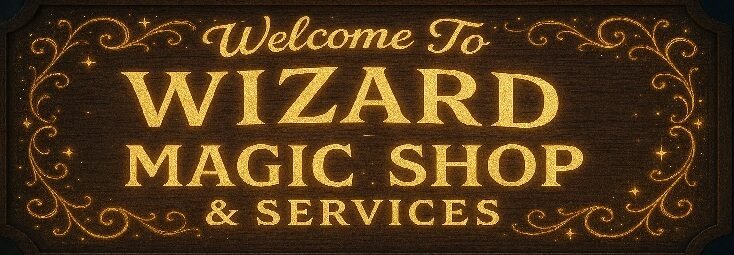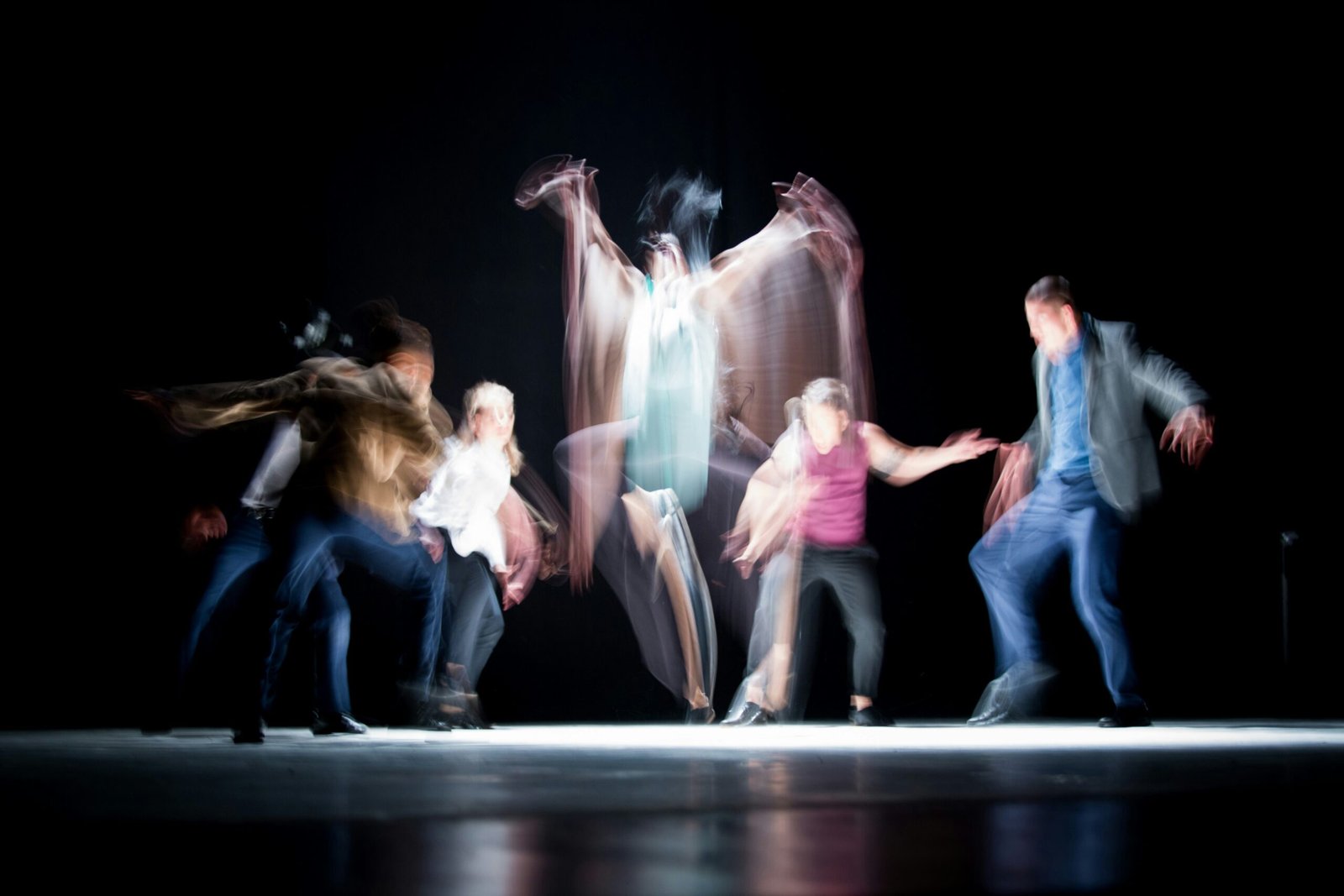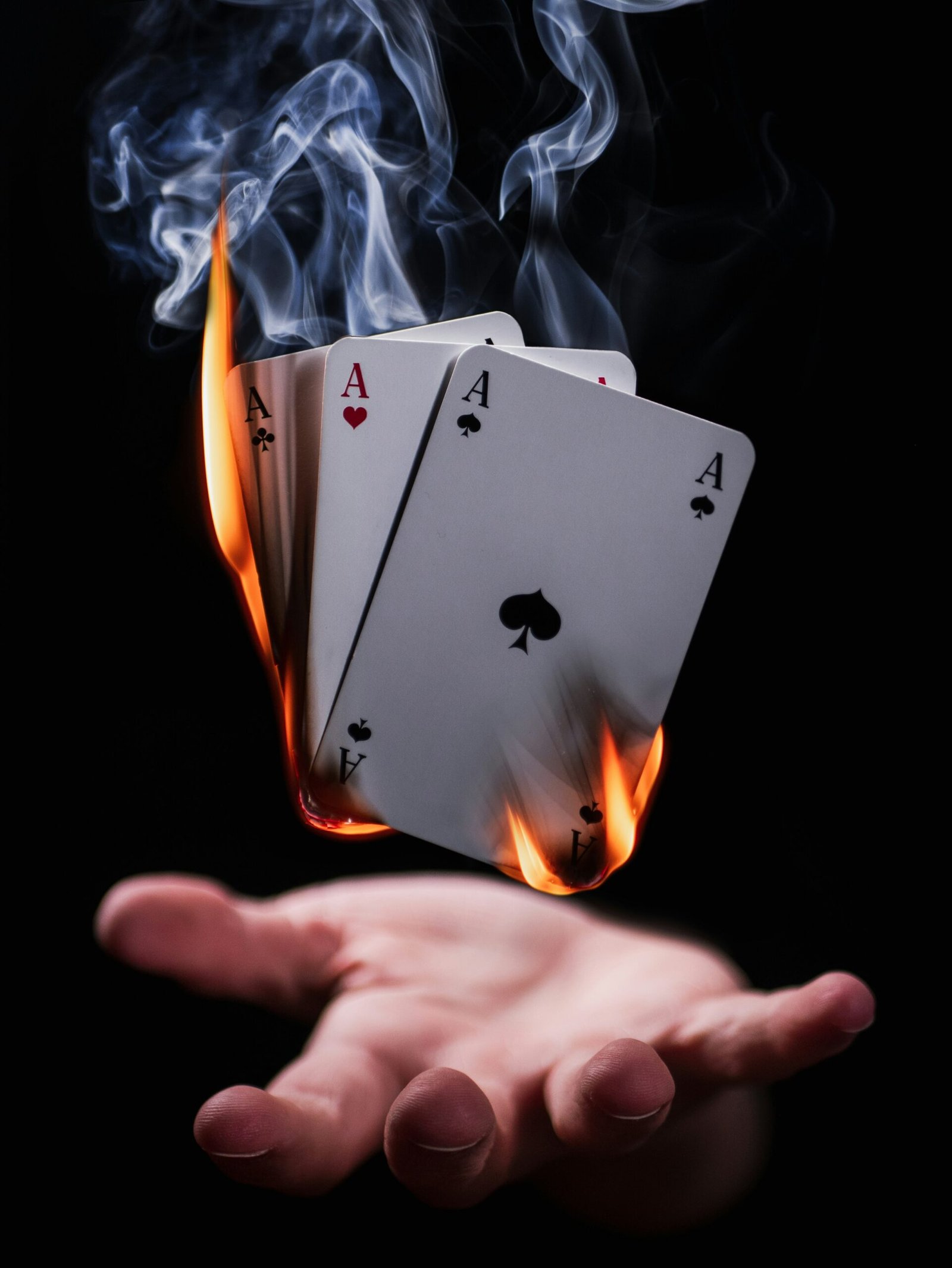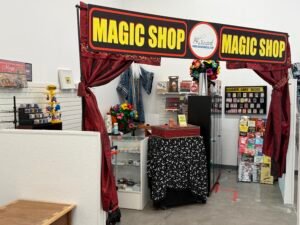Exploring the Enchantment: Types of Magic Tables Used in a Magic Act

Photo by <a href="https://unsplash.com/@pantiumforce" rel="nofollow">Muhammad Haikal Sjukri</a> on <a href="https://unsplash.com/?utm_source=hostinger&utm_medium=referral" rel="nofollow">Unsplash</a>
Introduction to Magic Tables
Magic tables have played an essential role in the realm of illusion and performance arts, serving as both props and integral components of a magician’s repertoire. These specialized tables are designed to enhance tricks and create mesmerizing illusions, captivating audiences with their unique features. Historically, the use of tables in magic acts can be traced back to the early days of performance magic, where they were employed not just as functional pieces, but as tools to elevate the overall spectacle of the act.
The concept of the magic table evolves from traditional stage props, merging artistry with intricate mechanics. Throughout the 19th and 20th centuries, magicians began to experiment with various types of tables, incorporating secret compartments and false bottoms that allowed for the seamless execution of tricks. These adaptations not only impressed spectators but also provided a platform for the magician to showcase their dexterity and creativity.
In performance magic, the significance of tables goes beyond mere aesthetics; they are often pivotal in creating illusions that leave the audience in awe. A well-crafted magic table can create a strong visual statement and enhance the story being told through the act. The tables may be adorned with elaborate designs, textures, and colors that align with the theme of the performance, further engaging the audience’s senses.
As magic continues to evolve, so do the designs and functionalities of magic tables. Today, modern magicians utilize cutting-edge materials and technologies, maintaining the charm of traditional tables while introducing innovative features. Through this integration of design and function, magic tables remain a central element of contemporary magic acts, providing a foundation upon which countless illusions can be built. Engaging with this rich history allows audiences to appreciate the complexity and creativity behind each performance, underscoring the importance of magic tables in the world of magical illusions.
The Role of Magic Tables in Illusions
Magic tables play a pivotal role in the execution of illusions, serving as essential tools that enhance the thematic and aesthetic elements of a performance. These specially designed tables not only provide a functional space for magicians to execute their tricks but also contribute significantly to the visual spectacle and narrative cohesion of a magic act. The function of a magic table often extends beyond mere support, establishing a focal point that captivates the audience’s attention.
In many cases, the design and decoration of magic tables are meticulously crafted to harmonize with the overall ambiance of the performance. For example, a table adorned with mystical symbols can set a tone of enchantment, engaging the audience’s imagination right from the outset. Through strategic placement and dynamic movements, the presence of a magic table can manipulate the viewers’ perceptions, guiding them toward a sense of wonder and surprise. This interplay between the table and the illusions performed creates an immersive experience, allowing spectators to become fully absorbed in the unfolding narrative.
Moreover, magic tables are integral in the mechanics of various tricks. Many illusions rely on hidden compartments, trapdoors, or elaborate mechanisms built directly into the table’s structure. This allows magicians to perform seemingly impossible feats, such as making objects appear or disappear. The physicality of the table facilitates these actions, as the magician can seamlessly transition between different tricks while maintaining the illusion of continuity. The careful choreography involved in these performances relies heavily on the interaction between the magician and the table, further emphasizing their importance in illusionism.
Ultimately, magic tables are far more than simple furniture; they embody tools of enchantment that engage curiosity and inspire awe in audiences. Their strategic use in performances solidifies their place as indispensable elements in the world of magic.
Types of Magic Tables
Magic tables are essential tools for illusionists and entertainers, serving as platforms for various tricks and performances. Among the most recognized types are classic tables, vanish tables, production tables, and specialty tables, each meticulously designed to serve distinct purposes in the realm of magic.
Classic tables are characterized by their elegant designs and versatility. Often used in stage performances, these tables are typically sturdy and spacious, accommodating a range of props and accessories. A classic magic table may feature hidden compartments to contain necessary items, allowing the magician to perform seamlessly without revealing the mechanics behind the illusion. It remains a staple in many magic acts due to its timeless appeal and reliability.
Vanish tables, on the other hand, are engineered to create the illusion of disappearance. These tables usually incorporate clever mechanisms that allow objects to be rapidly concealed from view. Their construction often includes trap doors or sliding panels, enabling quick transformations during the act. The ability to make items vanish and reappear captivates audiences, making vanish tables a popular choice among illusionists.
Production tables serve a different function, focusing on the emergence of objects rather than their disappearance. Typically designed with elaborate aesthetics, these tables often reveal an array of props, such as flowers, doves, or other surprises. The dramatic presentation of these tables can enhance the overall theatrics of the performance, leaving audiences in awe of the magician’s ability to produce seemingly magical results.
Lastly, specialty tables encompass various unique designs tailored for specific tricks or routines. From tables that incorporate lighting effects to those that enable transformation of items, their innovative designs are as diverse as the performances themselves. In summary, understanding the different types of magic tables enhances the appreciation of the art of illusion, as each table is uniquely crafted to support the magician’s vision and creativity.
Classic Tables: The Foundation of Magic
In the realm of magic acts, classic magic tables serve as an essential component, laying the groundwork for numerous illusions and performances. These tables, often crafted from fine woods or sturdy materials, are designed with both aesthetics and functionality in mind. Traditional designs incorporate vibrant colors, elaborate carvings, and luxurious fabrics, inviting the audience’s curiosity even before the performance begins.
Classic magic tables are utilized for various purposes within a magic act. For instance, the infamous “table of plenty” can be found in many performances where the magician produces an array of objects seemingly from thin air. This type of table is typically equipped with hidden compartments, allowing for seamless transitions and surprising revelations that captivate the audience. Another prominent example is the “vanishing table,” often used in illusions where the magician appears to make a large item disappear entirely, showcasing the power of misdirection and sleight of hand.
Several notable magicians are synonymous with the classic magic table. Harry Houdini, for instance, famously utilized such tables in his escapes, often enhancing the drama of his performances. Similarly, David Copperfield has incorporated classic designs in his highly regarded shows, leading audiences through intricate narratives that hinge on the elements presented on these tables. These legendary figures exemplify how classic tables not only enhance the theatrical aspect of a magic show but also serve as vital tools in executing complex tricks.
The enduring appeal of classic magic tables lies in their multifaceted usage, charming appearance, and the way they elevate the overall experience of a magic performance. As mystery and artistry blend seamlessly, these tables truly represent the foundation upon which many successful illusions are built, ensuring their continued presence in the world of magic.
Vanish Tables: The Masters of Disappearance
Vanish tables are an integral component of many magic acts, renowned for their ability to create astonishing illusions of disappearance. These tables are meticulously designed to combine aesthetics with sophisticated mechanics, allowing performers to achieve effects that leave audiences in awe. By utilizing hidden compartments, trapdoors, and sleight of hand, magicians can make objects appear to vanish into thin air, creating an air of mystery and wonder during their performances.
The mechanics behind vanish tables involve both clever engineering and theatrical deception. At first glance, a vanish table may look like an ordinary piece of furniture, but a closer inspection reveals its cleverly concealed features. Often, these tables are constructed with concealed compartments or hinges that enable an object to be quickly concealed. Some vanish tables incorporate mirrors and light manipulation, further enhancing the illusion. For instance, a table may have a mirrored surface that reflects the surrounding environment, creating the perception that an object has vanished when, in fact, it has been hidden from view.
There are numerous famous illusions that exemplify the effectiveness of vanish tables. One notable example is the “Vanishing Lady” illusion, in which an assistant seemingly disappears from a table, leaving only a thin cloth behind. Illusions like this showcase the effectiveness of vanish tables, as they seamlessly integrate into the performance, allowing the magician to maintain an element of surprise. The creative use of vanish tables spans various types of performances, from intimate close-up magic to grand theatrical displays, emphasizing their versatility and importance in the magic community. By understanding the intricacies of these tables, one gains a deeper appreciation for the artistry and craftsmanship that underlies the art of magic, as well as the skill required to perform these captivating illusions successfully.
Production Tables: The Birth of Surprises
In the realm of magic acts, production tables play a pivotal role in the creation of suspense and wonder. The primary purpose of a production table is to serve as a cleverly engineered platform that reveals objects in an unexpected manner, captivating the audience and enhancing the overall performance. Magic enthusiasts and professional magicians alike recognize the significance of these tables as instruments of illusion.
The design of production tables is a testament to the ingenuity of magic creators. They are often crafted with hidden compartments, trap doors, and intricate mechanisms that allow for swift and seamless transitions. For instance, a magician may utilize a production table to seemingly pull an endless array of items from an empty surface, thereby creating a sense of amazement among spectators. This magical revelation not only entertains but also stimulates curiosity and engagement.
Moreover, the aesthetics of production tables are equally important. These tables often feature elaborate decorations and are designed to harmonize with the overall theme of the magic act. By blending visual design with functionality, magicians ensure that the tables not only serve a practical purpose but also contribute to the thematic storytelling of the performance. The imagination involved in the creation of such tables is profound, as it transforms a simple piece of furniture into a vessel of surprise and delight.
In addition to enhancing the dramatic effect during performances, production tables also highlight the artistry involved in stage magic. The careful consideration of design and mechanism demonstrates the commitment of magicians to their craft, ultimately elevating the audience’s experience. As magicians continue to innovate and experiment with new technologies and materials, production tables remain essential tools in the pursuit of captivating wonder.
Specialty Tables: The Innovators of Magic
Specialty tables in the domain of magic acts serve as vital components, tailored to enhance specific illusions, themes, and performances. These innovative structures not only provide utility but also contribute significantly to the aesthetic experience of a magic show. Designed with creativity and precision, specialty tables often showcase custom features that cater to the unique needs of a magician and the tricks they perform.
Each table is crafted to fulfill specific requirements, enabling magicians to execute complex feats that captivate audiences. For instance, tables might incorporate hidden compartments for vanishing objects, concealed storage for props, or apparatuses designed to create visual illusions. The design is paramount; often, specialty tables are adorned with intricate designs or thematic elements that align with the overall narrative of the act, thereby immersing the audience in a cohesive magical experience.
Recent innovations in specialty tables highlight advancements in materials and technology. Some contemporary designs utilize lightweight yet sturdy materials that allow for easy transport and setup, accommodating the dynamic lifestyle of many performers. Additionally, enhancements such as digital displays or motion-sensitive components have emerged, adding a layer of sophistication and interactivity to the magic act. These innovations not only streamline the performance but also push the boundaries of creativity in magic, transforming traditional acts into high-tech spectacles.
Moreover, the evolution of specialty tables reflects broader trends within the magic community, where collaboration between magicians and designers has led to the creation of cutting-edge pieces of equipment. This partnership nurtures an environment where ideas are exchanged freely, resulting in fresh concepts that continually reshape the landscape of magic performances. Ultimately, specialty tables exemplify how innovative design is crucial in the art of magic, enhancing not just the effectiveness of tricks but also the overall audience experience.
Creating Your Own Magic Table
Crafting a personalized magic table requires careful consideration of several key elements that will not only enhance the visual appeal but also support the functionality during performances. The design should incorporate attributes that resonate with your unique style, making it an extension of your magical persona. When contemplating the aesthetics, think about the theme of your magic act, whether it leans towards the mystical, the playful, or the dramatic, as this will have a significant impact on your table’s appearance.
Material selection plays a crucial role in the table’s overall performance and durability. Popular choices include wood for its sturdiness and ability to be intricately crafted, while lightweight materials such as aluminum are ideal for those who require portability. The finish of the table can also influence the visual aspect; a glossy surface may catch the light and add a dazzling effect, while a matte finish may impart a more understated elegance. It’s essential to ensure that the materials chosen can withstand the wear and tear of regular use, particularly if the performances are frequent or involve elaborate tricks.
Additionally, consider the dimensions of the magic table. The height should be suitable for your performance style and the types of magic tricks being executed, allowing you easy access to props and tools without obstructing your audience’s view. Moreover, think about the table’s weight; it should be stable enough not to flip or tip over during an act while remaining light enough for easy transport. Finally, integrate practical features like hidden compartments or adjustable heights, as these can significantly enhance your performance and add an element of surprise, keeping your audience engaged throughout the act.
Conclusion: The Lasting Impact of Magic Tables
In the captivating world of magic and entertainment, the significance of magic tables cannot be overstated. These specialized tables serve as essential tools that enhance the performance of magicians, creating an atmosphere of wonder and intrigue. Throughout the discussion, we have examined various types of magic tables, each tailored for specific types of illusions and tricks, such as the classic table for card manipulation or the elaborately designed tables for grand illusions. This versatility highlights the role that magic tables play in elevating a magician’s act from ordinary to extraordinary.
The selection of a magic table is not merely a matter of aesthetics; it directly influences the magician’s ability to execute and conceal tricks seamlessly. As we have seen, the choice of materials, design, and functionality can substantially affect the overall impact of a performance. For aspiring magicians, understanding the diverse options available is crucial for crafting a unique and engaging show. Experimenting with different types of magic tables can lead to the discovery of innovative techniques and effects that can captivate audiences.
Additionally, magic tables also facilitate a deeper connection between the performer and the audience. The act of presenting tricks on a well-chosen table helps to establish the magician’s persona, offering visual cues that engage spectators on multiple levels. This relationship is vital in building anticipation and enhancing the overall magic experience.
As one embarks on a journey in the realm of magic, it is advisable to explore the myriad types of magic tables readily available. Embracing this aspect of magical performance can lead to both personal growth and professional success within the entertainment industry. Ultimately, the lasting impact of magic tables lies not only in the tricks they enable but also in the stories and emotions they help convey to audiences around the world.






